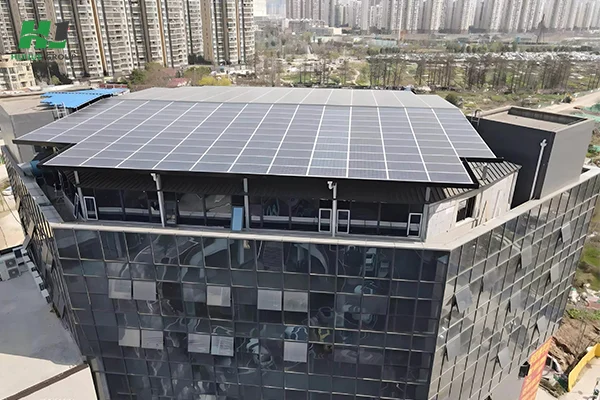Project Background
With the intensification of urbanization and increasing energy demands, cities are in the challenge to manage their energy consumption and reduce carbon emissions. Rooftop space on high-rise buildings is normally left underutilized; thus, using this space for the generation of solar power can be an answer to these challenges. The aim of the rooftop solar microgrid project is to utilize renewable energy, reduce dependence on fossil fuels, and support sustainable urban development. The project not only installs solar panels on rooftops to generate electricity but has also integrated an energy storage system that provides assurance for the reliability and stability of the power supply.
Design Plan
Project Overview:
- LOCATION: On the rooftop of a high-rise building in the city.
- PROJECT TYPE: It is a rooftop solar microgrid project, therefore, a small power system capable of generating electricity from solar energy within the building and perhaps connecting with the grid.
- PROJECT SIZE: The project features a 100 kW solar system, which has an energy storage; thus, it can produce power to match a specified scale of energy demand and simultaneously store spare power.
System Architecture:
They were fitted on the roof to collect solar energy and convert it into electrical energy:
- Energy Storage System: Lithium-ion batteries capture all of the sun's energy and convert it into electricity.
- Energy Storage System: Excess power generated from the solar panels is stored in the lithium-ion battery pack.
- EMS—Energy Management System: It is an apparatus, which in real time, will monitor and manage the operation of solar power generation, energy storage, and electrical equipment. Grid-tie inverter: Converts the DC power produced by the solar panels into AC power so the electricity can be utilized inside a building or transmitted to the grid.
Design Specification:
- Solar Panel Layout: Determine the best layout and tilt angle of solar panels to optimize solar energy capture, given the spatial dimensions of the roof and the solar energy resource distribution.
- Energy Storage System Configuration: Selection of appropriate battery bank capacity to ensure sufficient power supply during peak demand hours.
- EMS system: Keep the whole system in stable and efficient operation through intelligent monitoring and scheduling.
The project will make use of space on the rooftops of high-rise buildings in urban areas, contributing to the reduction of fossil fuel dependence by means of solar power generation, reducing carbon emissions, and thus contributing to the sustainable development of the city. The project also tries to ensure reliability and stability in the power supply through the energy storage system and energy management system.
Project Advantages
- Energy conservation and emission reduction:
- The installation of solar panels on the roof space of high-rise buildings is likely to reduce the carbon footprint of the building, i.e., reduce greenhouse gas emissions, and help achieve carbon neutrality goals.
- Energy consumption and pollution emissions are reduced by decreasing dependence on conventional energy sources like fossil fuels through solar power.
- Economic Benefits:
- The solar systems work during the day and store the excess electricity generated; this stored electricity is used during peak hours in the evening, saving on electricity costs by lowering electricity bills, especially during peak hours.
- When the solar power generation exceeds the electricity needs of the building, the excess power is sold to the grid and additional revenue is generated for the project. Many solar power projects can be subsidized by the government in terms of financing, which will help to decrease the initial cost investment in the project.
- Stability and Reliability:
- Energy storage systems, like lithium-ion battery packs, could potentially store extra energy and provide backup power in case of grid failure or outages. That way, one can consider the power supply as somewhat more reliable.
- Energy management systems are the appropriate means to optimize energy usage with intelligent monitoring and scheduling for stable and efficient operation of solar and energy storage systems.
- Environmentally friendly:
- The solar power system contains no mechanical moving parts and works with low noise, which in turn reduces noise pollution. A PV system installed on the roof occupies no additional land resources, saving land resources. This is most suitable for dense populated urban areas and has good promotion value.
